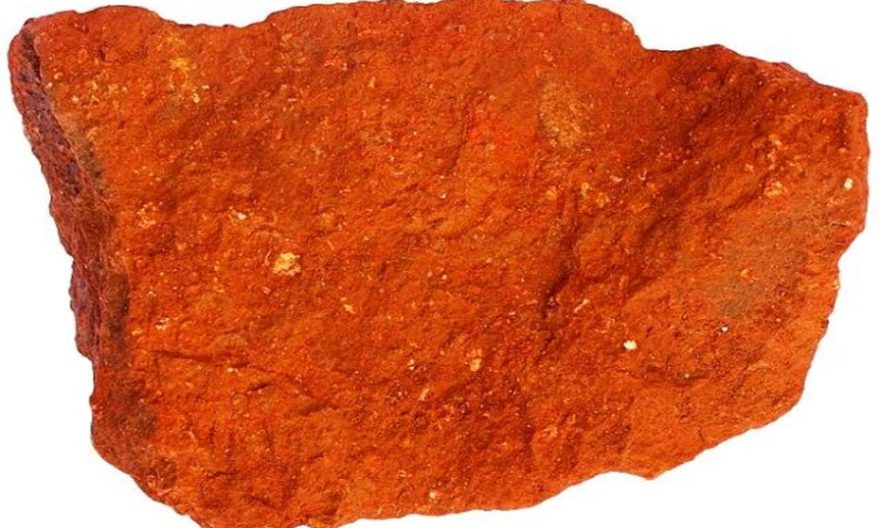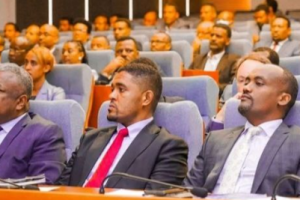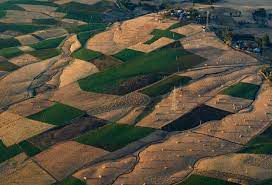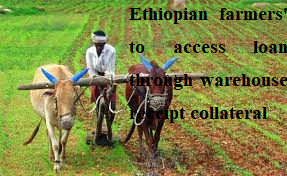
Amhara region is one of the regions rich in natural resources. Among these natural resources, mineral wealth that includes gold, opal (precious minerals), coal, gypsum, and limestone can be mentioned. The mineral resources are identified by research. However, data indicates that 70 percent of the mineral resources in the region have not yet been identified. Other information also points to the presence of iron ore in different areas of the region.
Tamrat Demisse, Deputy Head of the Amhara Regional Mineral Resource Development Office, stated that there are many mineral resources. So far, about 40 minerals have been identified by research, and among them; opal, gold, gypsum, coal, betonies, humus, limestone and similar types of minerals are available. Among the minerals that have been identified this year, there is a mineral named Silicasant.
According to Tamrat, licenses are being given to investors who develop the minerals. It is planned to give licenses to seven investors who will develop silicon mineral, and so far, the license has been given to one investor.
Opal mining is mostly found in South Wollo and North Wollo zones. In the eight districts of the two zones, 69 enterprises with a workforce of 7,430 are organized and are producing and marketing opal. In the 2023/24 fiscal year, it is planned to earn 7,200,000 US dollars by exporting 18,156 kilograms of opal products. Exporting 10,959 kilograms of opal products in the quarter; Tamrat announced that it was able to earn 324,428 USD. He pointed out that this includes both value-added and non-value-added opal production.
In the research conducted in the region, it has been confirmed that there are gold deposits in different places in Gondar, West Gojjam and Awi Zone. 67 enterprises with 1,156 employees have been organized and put into work to produce gold in these places.
It is planned to earn 4,628,950 USD by sending 120 kilograms of gold to the foreign market in the 2023/24 fiscal year. According to the deputy head of the office, in the region, gold is produced in traditional and modern ways by small producers and companies. It is planned to produce 20 kg of gold by small producers and 100 kilograms of gold at the company level in the current fiscal year. Gold producers have been given sites and locations in various areas and they have been put to work.
Because most manufacturers are licensed for exploration, they will be issued a production license as soon as the exploration process is entirely done. The exploration license is valid for six months. After six months, production license will be issued to the investors. The deputy head of the office mentioned that after the manufacturers are given a license for exploration, they will get a production license and start working so that licenses have been given to five producers in the current fiscal year.
Amber is one of the other mineral products that are planned to be exported to the foreign market. It is planned to earn 10,120 USD by exporting 250 kg of amber in the current financial year. Another mineral product planned for export is gypsum and it is planned to earn 681,819 USD by sending 7,500 kilograms of gypsum to the foreign market.
As the Deputy Head of the Office, a total of 1,336 enterprises with 8,586 employees have been organized and started working on gold and opal mining. In addition, he mentioned that there are producers who add value or process precious metals and supply them to the local and foreign markets.
It is planned to grant licenses to 15 producers of precious metals in the current fiscal year. The licenses have been given to four producers so far, and it is planned to grant licenses to 30 producers in the fiscal year. License has also been given to three manufacturers. As of him, it was planned to create job opportunities for 45,143 citizens in the mining sector in the 2023/24 fiscal year, and it was possible to create job opportunities for 4,149 citizens in the first quarter.
The deputy head mentioned that there are various problems encountered the sector and the first problem that arises in the mining sector is that the producers produce the mineral (opal and other minerals) in a traditional way. Improved technologies are needed to extract and use the mineral resources appropriately. Lack of these technologies is a big obstacle in the sector.
As he announced, the second problem is that the mineral product for exportation is raw opal (no value added, no processed). If value is added to this product in the country, it can create more job opportunities. Opal being brought to the foreign market without adding value is a big problem for producers engaged in the sector. As a result, their production is small and they face a problem on processing the ore.
He said that the mineral that is being sent without value addition is creating job opportunities for foreigners. Different technologies are needed to provide value added product that can satisfy the demand of the foreign market.
The third challenge he mentioned is the issue of market linkage. There is no market linkage that is so short that the producer can immediately sell the product and improve his income and livelihood. As a result, the manufacturer tries to sell the product in different places. Another problem is that there is no credit system for young people engaged in this sector to buy more technology. The inability of credit institutions to provide loans is mentioned as a problem.
He further stated that the illegal activity that is happening in the mining sector is another challenge. It is known that there is illegal mining in various places. Traders who move minerals from one place to another without a legal permit have been increased. These bodies are taking advantage of the youth and the investors instead of following the legal line and there are entities who want to take minerals illegally in a shortcut way.
Tamrat said that work is being done to solve the problems that arise in the mining sector in the fiscal year. For this purpose, the construction of a mining shopping center at Delanta in South Wollo Zone is done. As to him, they are working together with the finance office to establish the center and start work. This shopping center can shorten the long process of marketing. It expands the market connection and opens up a wide opportunity for buyers to come and buy in the market center.
He said that an institution capable of managing the mining sector has been established near where the minerals are located. The regional mineral resources development office did not have any branches in the zone or district until recently. At present, he stated that the office has been set up at the zone level and at the district level.
For example, the shopping center built in Delanta is responsible for the mineral wealth of the district. By organizing the center with different materials, efforts are being made to put various technologies into operation to make opal last longer by using technologies. In this regard, the office in Delanta is being established, organized, strengthened and supported by technology.
“We have prepared guidelines to put the shopping center into operation,” the deputy head of the office said. Opal is located in North Wollo and South Wollo areas, so that work is being done to complete the necessary materials for the shopping center in South Wollo Delanta. It is planned to build a shopping center in North Wollo in the current fiscal year, he added.
Tamrat further stated that guidelines are being prepared to prevent minerals’ development related illicit deeds in the region. The task force is working to prevent illegal mining. A guide has been prepared to control illegal minerals in every kebele and district by coordinating with various partners (experts and leaders related to police, justice, peace and security) by establishing checkpoints and conducting inspections.
On the other hand, various awareness programs will be conducted to prevent illegality. An awareness raising campaign is set to be held in the Amhara region in the second quarter of the current fiscal year to explain the negative impact of illegal trafficking in minerals.
BY BACHA ZEWDIE
The Ethiopian Herald November 30/2023





